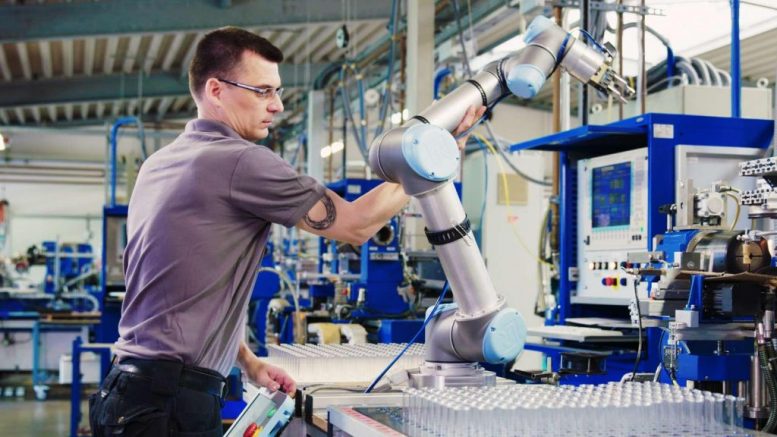Manufacturers in the automotive and aerospace sectors have always been measured on the quality of their products, the efficiency of their standards from design and production to the delivery of their goods and services.
And you’d better be fast, you’d better be good, and you’d better be able to do it more than once.
Making a name for your little machine shop and joining an Original Equipment Manufacturers (OEM’s) tiered supply line depends upon a staged criteria ranging from development, pre-production, production, post-production, and distribution.
Learning to automate: Case study
The large supply lines of companies like a BMW or Boeing demand the latest in not only manufacturing systems, but in the execution of their processes.
Today, those standards are dictated by efficiencies created by emerging automation technologies.
“Applications include everything from robotic process automation (RPA), machine learning, and artificial intelligence to things like collaborative robotics made for lifting heavy objects, loading delivery trucks around the clock, or completing all the repetitive tasks and dangerous work alongside heavy machinery,” said Brian Kuney, VP at the South Carolina Manufacturing Extension Partnership.
“Every machine shop wants to become a tiered manufacturer, but companies must navigate a variety of protocol to join the supply line, whether it be an upgrade in their design, production, or delivery,” he explained. “But there’s a catch, contemporary manufacturing standards are dictated by automated technologies and their subsequent applications.”
“Whether it be automotive or aerospace, a list of safety and efficiency certifications must be awarded by a third party before your company can even be considered by a BMW, Volvo, Lockheed Martin, or Mercedes. Simply put, automating is a must,” he added.
Stay in the game!
Contemporary manufacturers are being forced to transform up and down the supply chain, as the means in which goods are engineered, produced, and distributed can now operate on their own.
The innovation and application of robotics, digital and automated solutions have connected the industry and pushed efficiency standards higher across the board.
It wasn’t too long ago that a busted part could halt production. It wasn’t too long ago that efficiency standards fluctuated as workflow patterns failed and were re-assessed, as work speeds varied from associate to associate and shift to shift, as employers risked staff injuries around the clock.
This cannot happen in an OEM’s supply line, and the solution is automation.
“Machine shops and small manufacturers should reach out to their federal MEP programs and ask about moving onto the radar of the larger firms,” Kuney said.
“Whether it be automating their processes or securing the right certifications, they will need a guide,” he finished.
 About The Author: Jacob Burgess is a graduate of Tri-County Technical College and attended Erskine College in the Business Administration program. Currently, Jacob is the Business Development Manager at Daedalus Industrial in Easley, South Carolina.
About The Author: Jacob Burgess is a graduate of Tri-County Technical College and attended Erskine College in the Business Administration program. Currently, Jacob is the Business Development Manager at Daedalus Industrial in Easley, South Carolina.


Be the first to comment on "Automation: A case study in tiered supply"